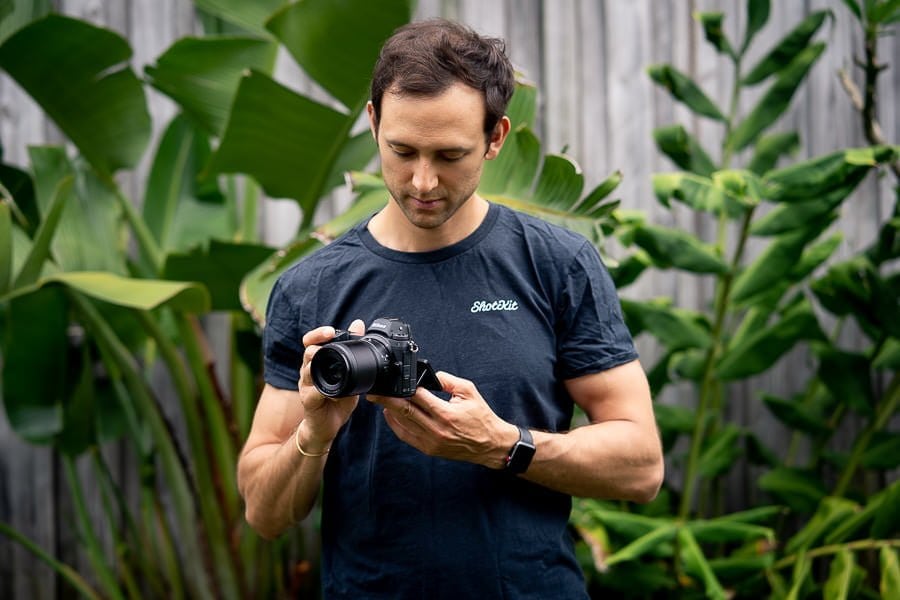Sports Photographers

I love a good tilt-screen! Checking out the build of the Nikon Z6 in my back garden.
I'm a full-time wedding photographer originally from the UK, currently residing in a small town near Byron Bay in Australia. I've been shooting weddings professionally for close to 10 years, having traveled all over the world doing what I love.
Occasionally I'll get paid to photograph families, events and even real estate, but weddings are my bread and butter.
I'm also the founder of Shotkit, having created it back in 2014 to peek inside the bags of my favourite photographers.
When I'm not reviewing the latest camera bag or testing out editing software, you can find me on some form of leg-powered two-wheeler, be it my gravel, road or mountain bike.
... although I am thinking about getting an e-mtb too :)
Website | Instagram | LinkedIn
My Latest Articles:
The camera bag of a sports photographer is a fascinating place.
If you’re interested in becoming one yourself, peeking inside the camera bags of sports photography pros will open your eyes to plenty of camera gear dos and don’ts.
What cameras do sports photographers use? What lenses? And what other interesting bits and pieces do they stash in their (durable, waterproof) camera backpacks when they head out in the field?
Those are some of the questions we seek to answer as we dig into dozens of sports photographer camera kits from around the world.
Now, let’s just start by acknowledging one of the most obvious requirements of sports photography gear: It has to be fast. Like, lightning fast.
Unless your sport of choice is lawn bowls or croquet.
But we digress. Suffice to say, almost all sports have a lot of movement in them, and your camera gear needs to be capable of capturing that.
That means a high-quality camera body (usually DSLR or mirrorless) – more than one if you’re on an important job and there’s a chance your primary body might get smashed by a rogue baseball or downhill skier.
While even the most basic digital cameras these days have pretty decent sensors, they’ll be lacking in speed of performance. Pro-grade camera bodies will be able to capture more frames per second (FPS) and have better buffer times.
Sports photography also begs for good quality glass. Sports photographers preference lenses with fast maximum apertures so they can let in a lot of light without compromising on shutter speed.
Weather sealing and durability of build are also important considerations for sports if what you’re shooting is outdoors.
As you’ll notice from poking around in our featured sports photographers’ kits, lens types and focal lengths vary greatly, as it all comes down to the style of the photographer and the sports they’re shooting.
For example, some sports photographers prefer prime lenses and will use a fixed wide angle lens when they want to capture more of the background – for example when shooting at a skate park or photographing a dancer against a beautiful landscape.
Others stick more to zoom lenses for outdoor sports – a 24-70mm and a 70-200mm, for example, gives plenty of flexibility to one’s kit.
If you need to be further from the action, a telephoto lens will be the go.
Beyond cameras and lenses, there are numerous other fascinating bits and pieces floating around in sports photographers’ kits. And not all of them are photography related.
Sure, there are tripods and filters and flash mounts and waterproof casings. And, of course, those durable, comfortable, weather-resistant camera bags that are so necessary for transporting and protecting one’s gear.
But what we love to hear about are the pieces of the kit that blur the line between photographer and sportsperson. Harnesses and carabiners and rappelling ropes; wetsuits and swimsuits, cycling shoes and ski boots.
Because you can’t help but admire a sports photographer who doesn’t just capture the action, but gets right in it.
See what inspiration and insights you can find inside these sports photographers’ camera bags. And happy shooting.
























